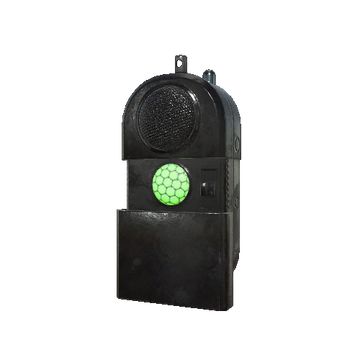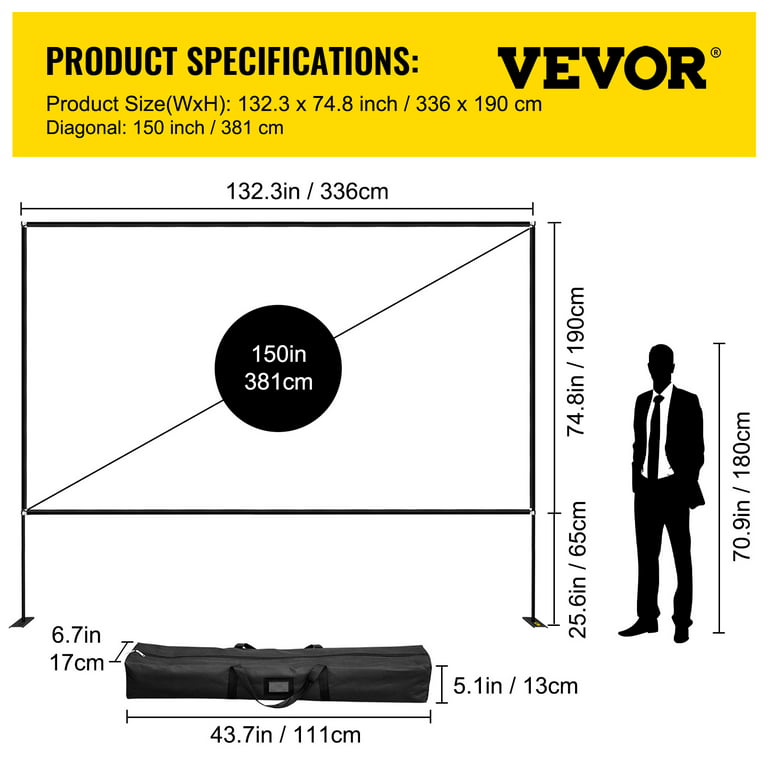Understanding Projector Technology: A Comprehensive Insight Into Projector Lenses
Introduction
Whether for the immersive experience of a home theater or for business, education, and conference presentations, the use of projectors has grown significantly. An essential component of any projector is the lens. Encapsulating unique characteristics, these lenses redefine the delivery of visuals on big screens. This article will provide a comprehensive overview of projector lenses, their working mechanisms, different types, and the impact they have on visual experience. Additionally, you will also gain insights on how to pick the perfect projector lens and avoid common purchasing mistakes. This article reveals all you need to know about projector lenses and their roles in enhancing your viewing experience.
What is a Projector Lens?
A projector lens can be metaphorically referred to as the 'eye' of a projector. Its primary job is to bring the images from the projector to life on a screen. It’s made up of high-quality glass, and its design ranges from straightforward simplicity to complex constructs, subject to model variations and integrated technology. The distinct functionalities of a projector lens include:
- Image Transmission: The lens takes in light from an illuminated lamp inside the projector, which carries the requisite image information.
- Image Magnification: It enlarges the image, thereby making it suitable for projection onto a significantly larger area compared to the original image size.
- Image Projection: The lens projects the magnified image onto a chosen surface, which could range from a dedicated projector screen to a simple wall.
The lens, thus, influences essential image attributes such as clarity, precision, and overall quality, ultimately affecting the viewer's visual experience. Without the lens, a projector would be merely a source of light. It's the lens that transforms this light into meaningful imagery, enriching the viewing experience manifold.
How Does a Projector Lens Work?
A projector lens accomplishes its task by employing the principles of optics in several intertwined steps. This process can be disassembled and understood more efficiently by digesting the following key points:
- Light Generation: Initiating the process, the lamp within the projector ignites, illuminating the content that requires projection. This step is where the journey of the image representation begins.
- Content Reflection or Transmission: The lit content is either reflected or transmitted onto a series of different elements that are determined by the type of projector being used. These elements could range from mirrors and prisms to LCD panels.
- Light Travelling Through the Lens: These elements guide the illuminated content towards the lens. The lens then adjusts the scale and the focus of the image based on the required size and projection distance.
- Image Magnification and Projection: The lens enhances the size of the image and projects it onto the screen, generating the observable display.
Thus, understanding the functioning of a projector lens provides an appreciation for the pivotal role it plays in shaping the quality of the visual content delivered by a projector.
The Overview of Different Types of Projector Lenses
The intricacies of projector lenses become clear when we delve into their different types. Essentially, projector lenses can be classified into two main categories based on their functionality: fixed and zoom lenses, and based on their operational distance: long throw and short throw.
Fixed versus Zoom Lenses: A Comparative Overview
• Fixed Lenses, often referred to as prime lenses, offer a specific, pre-set focal length. This means the image size and projection distance remain consistent. Their prime attributes include:
- Greater clarity and quality of projection as these lenses tend to be sharper.
- Excellent light-gathering capability, contributing to better illumination of the projected image.
However, fixed lenses allow minimal flexibility when adjusting the projection size or distance and require physical moving of the projector for any image size adjustments.
• Zoom Lenses contrast with fixed lenses due to their adjustable focal length. These lenses offer:
- The ability to adjust image size and projection distance without moving the projector.
- Maximum flexibility in different room sizes or seating configurations.
Although slightly compromising on image quality when compared to fixed lenses, zoom lenses are a practical and versatile choice for most applications.
The Lens Throw Spectrum: Long Throw versus Short Throw
• Long Throw Lenses come into play when substantial distances need to be covered without compromising on projection clarity. They are key choices for:
- Large venues like conference places, auditoriums, and lecture halls.
- Situations involving a significant distance between the projector and the screen.
• Short Throw Lenses, on the other end of the spectrum, can project large, clear images whilst seated relatively closer to the screen. They are ideal for:
- Compact venues such as classrooms, gaming setups, and home theaters.
- Environments where space comes at a premium, and minimizing shadows and light interference is critical.
Understanding these distinct projector lens types is pivotal for making an informed choice that aligns with your presentation needs and venue specifications.
The Importance of a Projector Lens in Enhancing Visual Experience
Projector lenses hold a significant stature in shaping the quality of the viewing experience. From clarity to the brightness of images, these components have a wide-ranging impact on the projection.
Decoding the Impact of a Projector Lens on Image Quality
Your projector's lens is a predominant factor determining the level of image quality achieved. Here’s how:
- Precision: A high-quality lens enhances the precision of images, making sure all details are sharp and clear.
- Color Accuracy: It plays an essential role in producing an accurate color representation, offering vibrant hues that replicate real-world colors.
- Contrast: The quality of the lens can also affect the contrast of the images, essential for defining clear distinctions between blacks and whites in an image and for creating depth.
- Eliminates Distortions: A well-designed lens offers minimized distortions such as blurring, providing crisp images.
However, remember that a low-grade lens might fail in retaining the quality of the image, leading to a mediocre viewing experience marked by blurring, distortions, and color inaccuracies.
Understanding How Focal Length of a Projector Lens Impacts Projection
The focal length is a property of the lens that describes the lens's ability to focus light, and it significantly influences the projector's functionality. Here’s how:
- Image Size: The focal length largely determines the size of the image that can be projected. A lens with a short focal length projects large images from short distances, and a lens with a long focal length projects smaller images from the same distance.
- Flexibility in Projection: Lenses with a range of focal lengths offer more flexibility, adaptability, making them ideal for different projection distances.
- Space Utilization: In smaller spaces, a shorter focal length would be a wiser choice and vice versa. It directly influences the projector's ability to adapt to different room sizes and viewing distances.
Armed with this understanding, you can make more informed decisions when choosing a projector lens, taking into account the specific requirements of your projection environment. The right choice of the projector lens can raise the quality of your projection from decent to remarkable, leaving your audience with an unforgettable visual experience.
Guidelines on Selecting The Right Projector Lens
Selecting the appropriate projector lens can seem daunting, given the sheer variety and technical aspects involved. However, armed with a little knowledge and clarity on your requirements, the choice becomes straightforward.
Considerations When Buying a Projector Lens
Here are the factors you should consider when buying a projector lens:
1. Focal Length: This specifies the distance between the lens and the screen. It's crucial to choose the correct focal length based on the size of your room and the distance from the screen.
2. Aperture: This refers to the opening that allows light into the lens. A larger aperture typically means more light and a brighter image.
3. Lens Material and Type: High-quality glass lenses usually offer better image quality.
4. Fixed or Zoom: Fixed lenses have a set image size and throw distance while zoom lenses offer more flexibility.
5. Intended Use: Are you setting up a home theater, classroom, or a large conference space? Your intent will significantly inform your lens choice.
Pitfalls to Dodge When Choosing a Projector Lens
When selecting a projector lens, people often make a few common mistakes:
1. Prioritizing Cost Over Quality: An inexpensive lens might seem appealing, but it could result in lower image quality.
2. Ignoring Throw Ratio: This is the ratio of the distance from the lens to the screen in relation to the width of the projected image. Not considering this could result in an image that's too large or small for your screen.
3. Overseeing Lens Compatibility: Not all lenses are compatible with all projectors. Always confirm that the lens works with your particular projector model.
4. Neglecting Projection Environment: Your choice of lens should complement the ambient light, room size, and color of your projection environment. Therefore, always consider these factors before settling on a lens.
Conclusion
Understanding and selecting the right projector lens is integral to enhancing visual experience and ensuring a captivating display. By gaining insights into how a projector lens works, the available types, and the important factors to consider when purchasing one, you are well-equipped to make an informed choice. Remember, choosing the right lens can significantly affect the outcome of your projection needs, be it for a business conference, classroom teaching, or an immersive home theatre experience.
Related FAQs about what is a projector lens
Why is there a need to adjust the focal length of a projector lens?
Adjusting the focal length of a projector lens is vital for imaging large visuals from short distances and smaller images from greater distances. It adds on greater flexibility and adaptability based on the space and size of the room, impacting the overall projection capabilities.

How does the lens aperture impact the projection quality?
Lens aperture, or the opening that allows light into the lens, plays a crucial role in determining the brightness of the image. A larger aperture typically allows more light, leading to a brighter image, whereas a smaller aperture restricts the light, causing the image to be dimmer.

Are different projector lenses suitable for diverse projector models and environments?
Yes, different projector lenses are tailored for various projector models and environments. For instance, long throw lenses are ideal for large venues like auditoriums, while short throw lenses work best in smaller spaces like classrooms. Choosing the correct lens based on your projector and environment enhances the projection quality.







